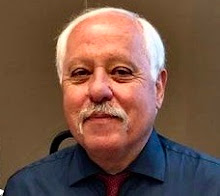Returning to a refurbished Allen Hall on the
University of Oregon campus after a lengthy hiatus in Agate Hall during
construction, I can think of only one word to describe the experience: "wowza!"
Marveling at the new environment during the first week of
class, I flashed back to the early 1970s when I arrived at Allen Hall as a
young pre-journalism major. That building, which housed approximately 400 j-students then, was essentially the same one we abandoned in 2011.
Today, with over 2,000 majors, the University of Oregon School of Journalism and
Communication -- with headquarters in Allen Hall -- has seen a fivefold increase in the number of
students since I first wandered into the building as an aspiring newspaper
reporter.
In those days, the Oregon Daily Emerald occupied a
significant portion of the third floor and University Printing was ensconced on
the first floor, so journalism students like myself who wrote for the ODE toiled on our stories using manual Underwood typewriters while absorbing the pungent
aroma and vibrating hum of the UO printing press.
In the early years of the journalism program, students were literally housed in a “shack.” A second shack –- along with the original version –- served as the home to the school until it was destroyed by fire in 1922. The fire resulted in the state approval of a brick structure built in 1923, later the east wing of the school, followed by an addition in 1954, which was named after the school's first dean, Eric W. Allen.
The 1923 structure was designed by none other than E.F. Lawrence, father of the UO School of Architecture and the dean of that school, as well as chief architect for the UO. A prolific architect and educator who designed many of the early buildings on campus, Lawrence also designed Eugene Water & Electric Board's Leaburg Powerhouse.
Now, nearly 100 years after the founding of the UO SOJC, the newly renovated structure -- dubbed Allen Hall 3.0, acknowledging the 1923 and 1954 wings -- is so much more than a makeover. While remnants of those buildings remain, Allen Hall has been expanded by about 18,000 square feet in this third iteration.
More importantly, the renovated Allen Hall reflects the changing face of journalism and communication. Much like today’s newsrooms and agency environments, Allen Hall 3.0 was designed with innovative and collaborative learning in mind.
The building features an eye-popping open atrium, with traditional
classrooms alongside informal learning areas, ubiquitous outlets and Internet
connections and the third-floor “digital commons,” a flexible space that can
accommodate large or small groups.
Allen Hall 3.0 exemplifies the digital convergence in media,
with an open studio environment for teaching, collaboration and media
production, and reflects the future of journalism and communication: multi-media
storytelling for the masses.
Despite grim predictions that “print is dead,” news
organizations –- and more importantly, good reporting –- will thrive in
this century through multi-media storytelling, as witnessed in the recent New York Time piece titled: “Snowfall: The Avalanche At Tunnel Creek.” The lines
are already starting to blur as both print and broadcast media feature narrative,
digital infographics and video on their websites.
So as I reflected on the new environment in Allen Hall
during my first week in class, I couldn’t help but think of the line from
Shakespeare in The Tempest: “What’s
past is prologue.”




